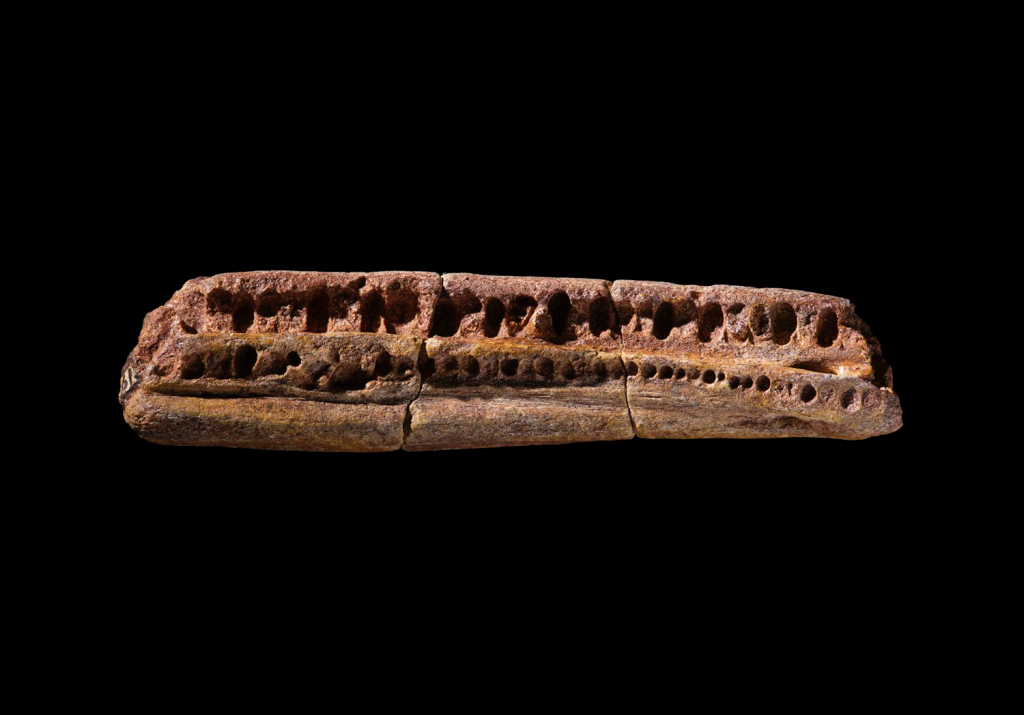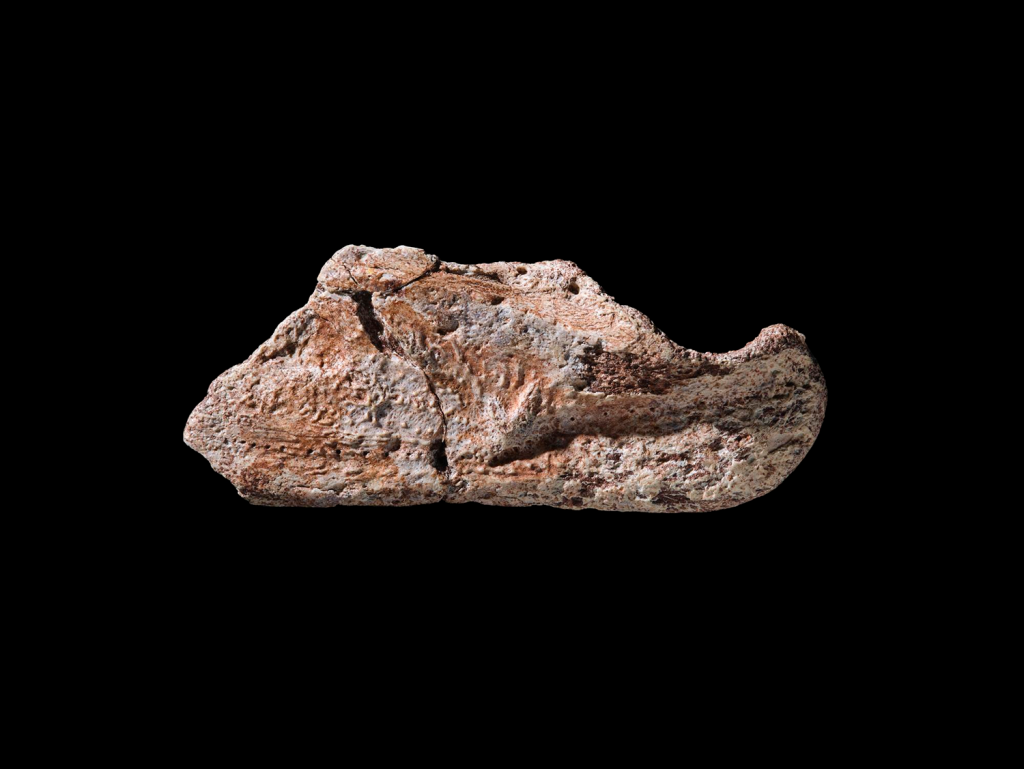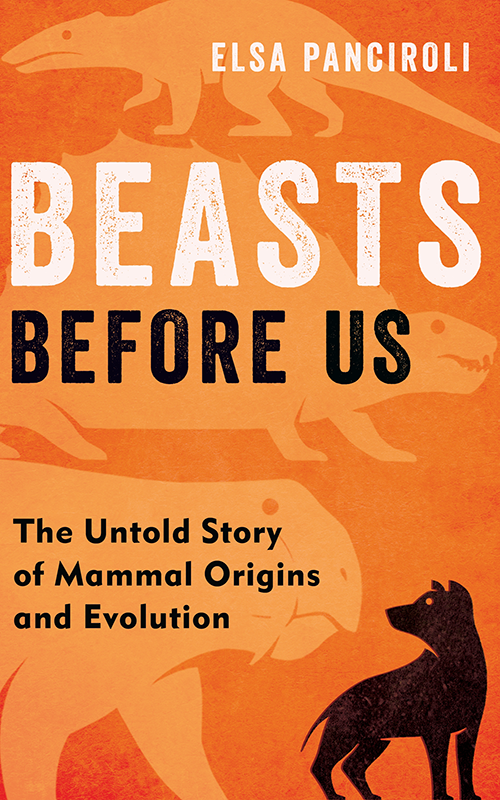Mammal diversity at the time of the dinosaurs is becoming better understood thanks to ongoing research. Central to this, Scotland is one of the few countries with fossils complete enough to shed some light. Associate Researcher Elsa Panciroli reflects on her work on fossil mammals using our collections.
They say that research is a journey and, often, you take routes unplanned. My own path has certainly led me to unexpected places. When I began my PhD in 2015 based at National Museums Scotland, I couldn’t have anticipated where it would lead, or the connections I’d make around the world and through time.
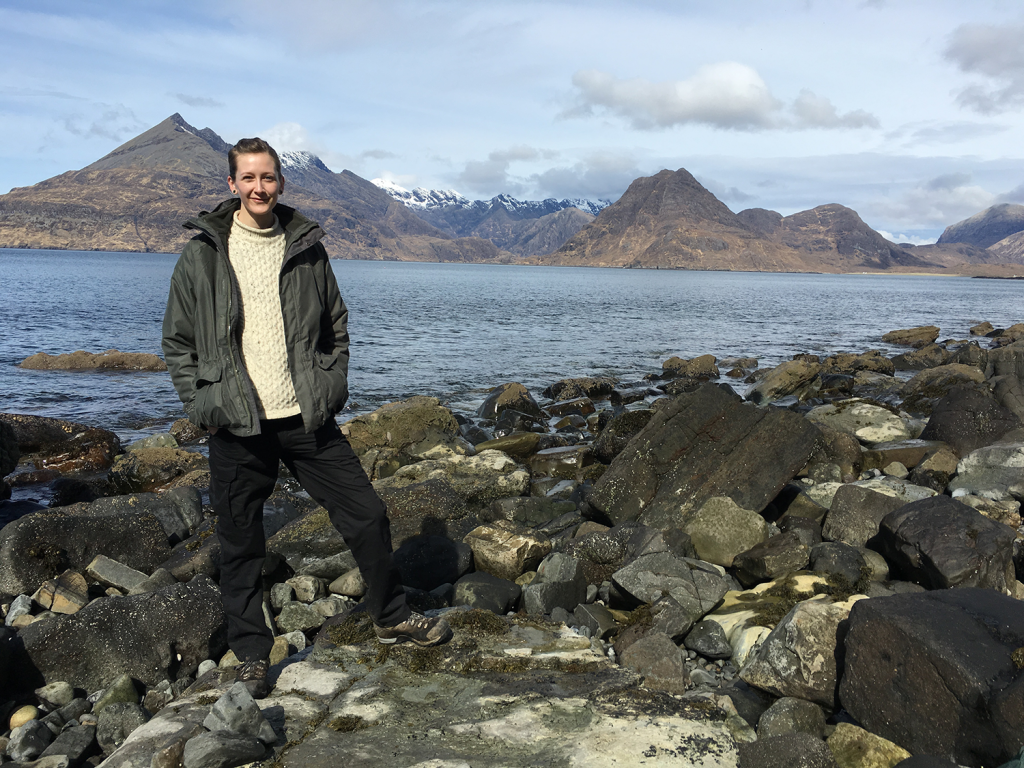
As I explored the fossil collections in the museum, I learned about the incredible clues to our evolutionary history that are held there. These include petrified bones and frozen footprints that inspired me to write a book, charting our evolution since the dawn of life on land.
My PhD centred on incredible fossil mammal skeletons from the Isle of Skye. These belonged to small, mouse-like mammals that lived alongside the dinosaurs in Jurassic Scotland. They were discovered in 1972, but had never been studied. My supervisors for the project included Dr Nick Fraser (Keeper of Natural Sciences) and Dr Stig Walsh (Senior Curator of Vertebrate Palaeobiology) and, although neither specialise in mammals, their expertise helped turn my eye to the bigger picture of mammal evolution, and how it is told through Scotland’s fossils.
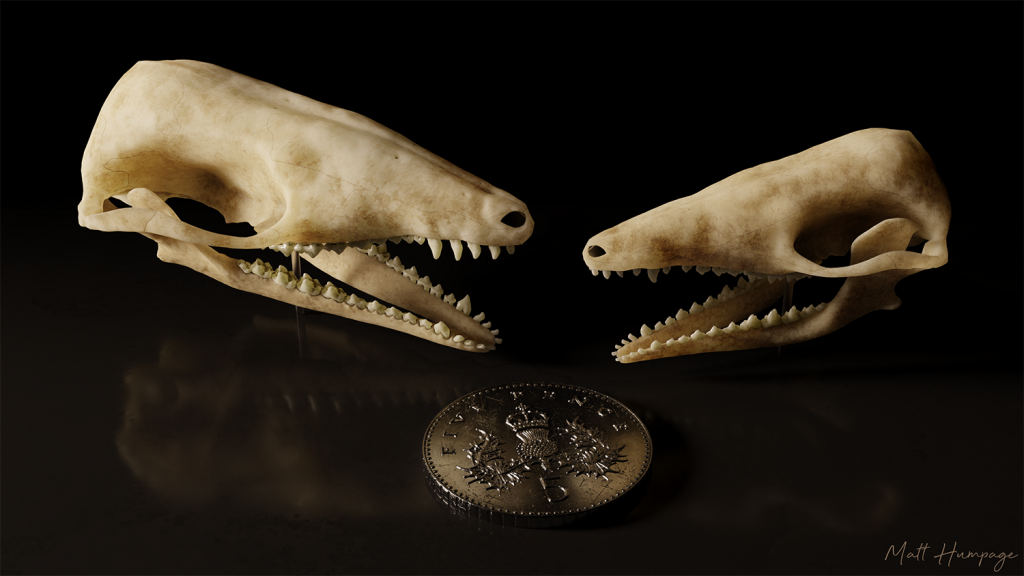
The Jurassic mammals from Scotland are 166 million years old. They come from rocks on Skye that represent a humid, freshwater lagoon. A bit like the Florida Everglades, but with more dinosaurs! One of the reasons these fossils had not been studied previously was that the rocks they are found in are not easy to work with. They can’t easily be removed using mechanical tools, or dissolved in acid, as you would do for other fossils. As a result, the tiny matchstick bones were effectively trapped inside the stone. In the end, I had to take them to the European Synchrotron Radiation Facility in Grenoble, where we used high-powered X-rays to see inside the rock, revealing their anatomy for study.
Why do the skeletons of these little creatures interest me so much? In the Jurassic, we are just starting to see the first proper mammals; creatures that look like the animals we recognise today and behaved in the same ways. Recent discoveries tell us that although mammals were mostly small in the time of dinosaurs (the largest being the size of a badger), they were quite ecologically diverse, certainly more than anyone previously thought. There were specialist diggers, swimmers, climbers and even gliders in the Jurassic and Cretaceous. The evidence for this has almost exclusively come from China where exceptionally complete fossils reveal the skeletal adaptations these animals possessed for living different lifestyles.
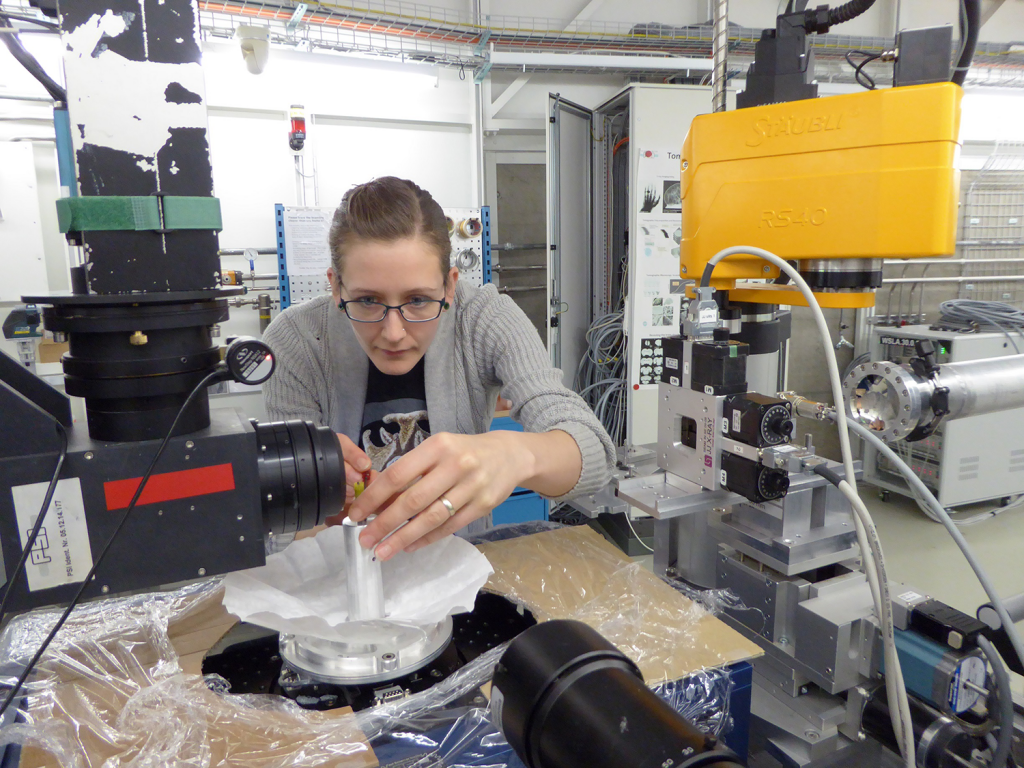
To find out if mammals were diverse elsewhere on the planet in the time of dinosaurs, we need more complete skeletons from other countries. Scotland is one of the only places with such complete fossils, making it an internationally important place for research. I undertook three years of studying the Jurassic mammals of Scotland in the quest to uncover what they looked like and how they lived.
An important part of any PhD research is taking advantage of the opportunities your supervisors provide for you. At National Museums Scotland, my supervisors worked on much older fossils, which didn’t seem relevant to my mammal-centric speciality. But I soon discovered that these other discoveries actually form a link between the first animals to walk on land and the tiny mammals making their living alongside the dinosaurs.
Researchers at National Museums Scotland are part of the TW:eed project, studying extinct life in the Early Carboniferous, around 350 million years ago. This time period was previously a bit of a mystery. Before that time, aquatic four-limbed animals (the first tetrapods) were pushing their way through the weed-choked waterways of our planet.
Creatures like Elginerpeton, a newt-like creature found in Morayshire. Later in the fossil record however, there are fully land-living animals. It was clear that in the Early Carboniferous these tetrapods made the transition from water to land, but the lack of fossils meant we didn’t know how and why. The TW:eed project has been tackling this enigma.
They have found animals like Aytonerpeton, from the Scottish Borders, which resembled a small lizard. Affectionately known as ‘Tiny’, this wee tetrapod is one of many that is filling the fossil gap, helping us understand how animals made that most significant voyage to become land-lubbers.
I accompanied Nick on a visit to the incredible quarries that surround the town of Elgin. These were once the source of building material and, during the extraction of stone, fossils had also been discovered. They are known as ‘Elgin Reptiles’, although this is a misnomer because they include mammal relatives as well. There are some very rare bones, often preserved as voids in the sandstone. Much more common are the fossil footprints, including long trackways from animals that plodded over Scotland when it was a hot desert near the equator.
The rocks around Elgin date to the Late Permian and Early Triassic, spanning a monumental changeover in life on our planet. In the Permian, over 252 million years ago, the ancestors of mammals were the dominant animals on land. Once known as ‘mammal-like reptiles’ (a term no longer in use), we now know they share no relation with reptiles, and that the two groups belong to completely separate branches of the tree of life.
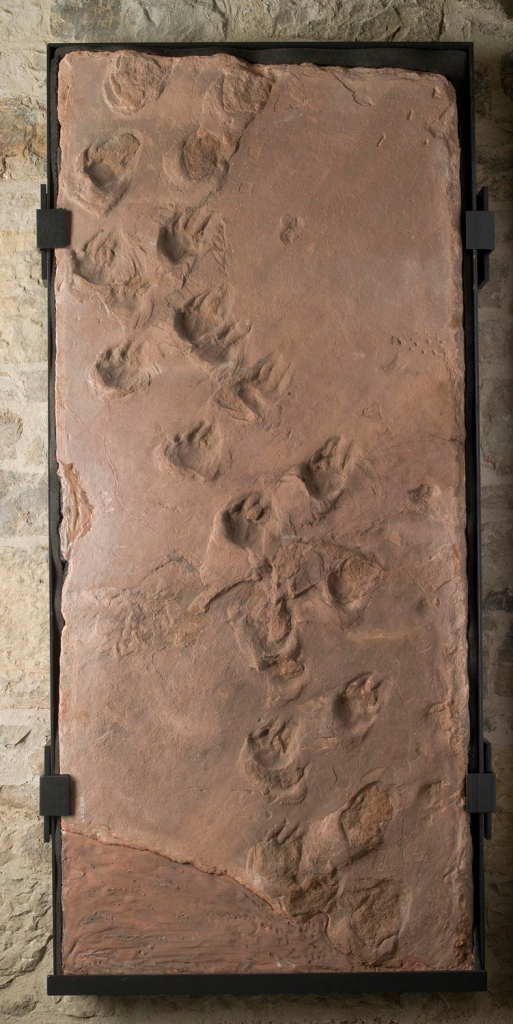
Many of the fossil footprints in Elgin belong to these creatures, which included the first megaherbivores and sabre-toothed carnivores. But by the Triassic, these giant beasts were gone and reptiles had taken over as the largest and most diverse creatures in the world. Until, that is, a certain mass extinction 66 million years ago.
Having the opportunity to find out about these fossils on our doorstep really opened my eyes to the big picture of evolution playing out in Scotland’s rocks. I’m now an associate researcher at NMS, and I’ve published several papers on the Jurassic fossils from Skye, including the one that went unstudied for so long: Borealestes, the ‘northern rogue’ (shown in the illustration above).
My time at NMS was formative: as well as gaining the confidence to become a fully-fledged researcher, I became a leading member of the fieldwork team making new fossil discoveries on Skye. We continue to find incredible fossil mammals, reptiles and salamanders, as well as the occasional bit of dinosaur.
Drawing on Scotland’s incredible fossil heritage, I recently wrote a book about the evolution of mammals. It’s my hope that by sharing the amazing stories I’ve uncovered on my journey in science, I can help inspire others to find out more about the museum’s collections, and how they fit into the global story of life on our astonishing planet.

